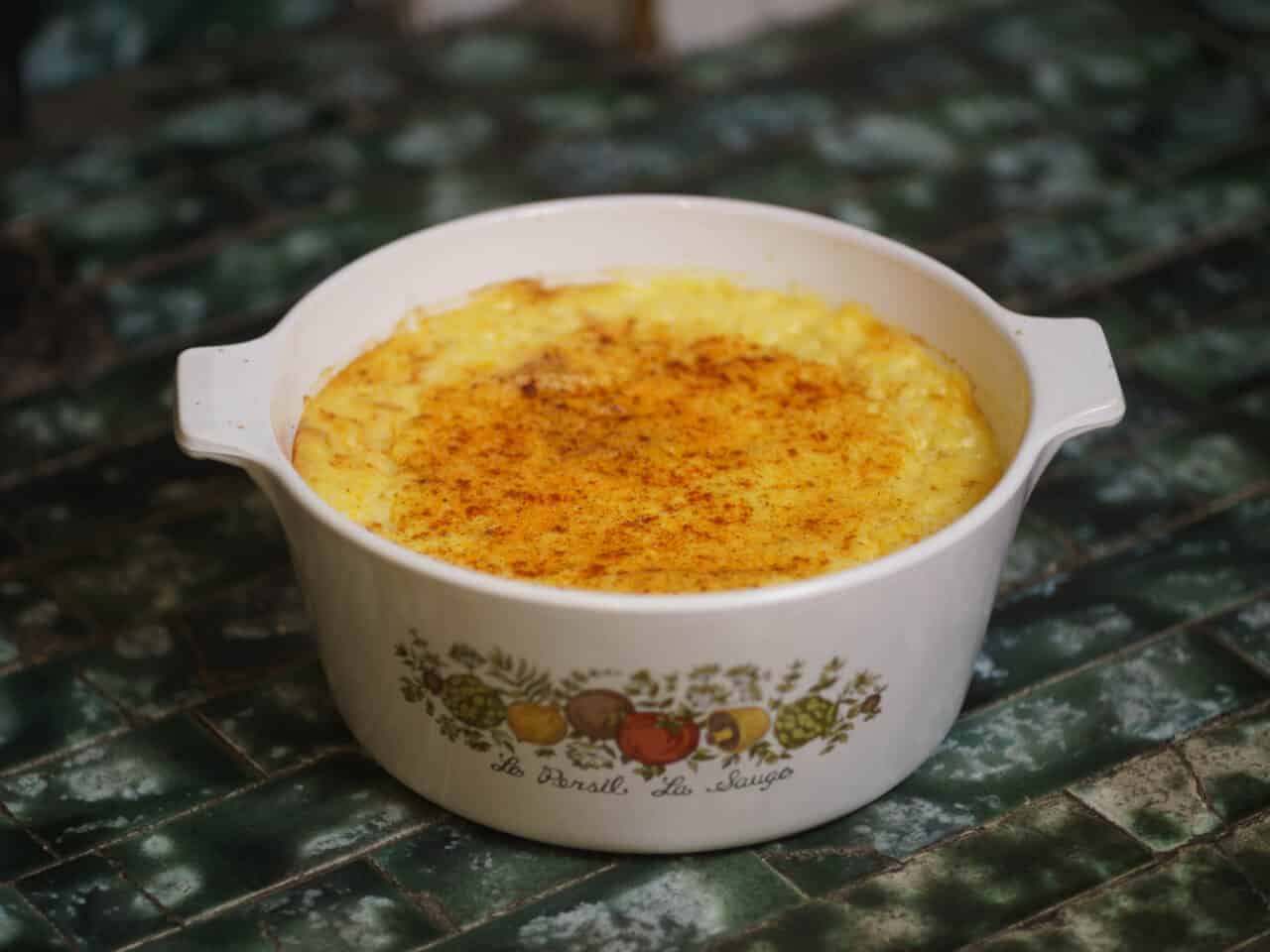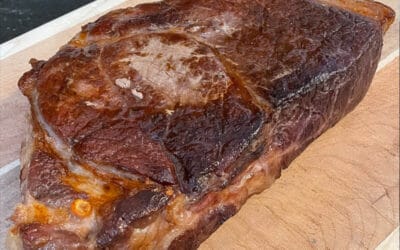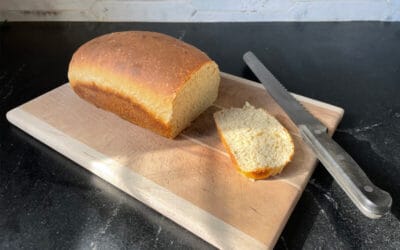
Brad Swancy from Riverview Farms Milling recently brought this season’s milling to the market and, wow, it is so fresh! I tried the grits and the corn smell and taste are wonderful. Riverview Farms Milling also brings cornmeal, polenta, and popcorn to market. Located in Northwest Georgia, the milling operation is part of the larger Riverview Farms, “…a second generation organic farm, and a diversified, self-sustaining operation that supports livestock, veggies, & grains.” The grits I tried are an heirloom, white dent corn, Hickory Cane dent corn.

Corn is an interesting plant. It has gone from a nearly inedible grass, to the staple of indigenous American peoples and scorn of Europeans, to now the staple crop of the world. Maize is what most of the world calls it and what its Latin name, Zea mays, sounds like. Corn, on the other hand, is in many countries the name for any type of cereal grain.
Whatever you call it, there are many ways to prepare it, starting with the whole corn. Native peoples all over the Americas nixtamalized their corn. They soaked it an alkaline solution, washed, then hulled it. This produces hominy corn, softer and easier to work with than the original. The change in flavor is, for example, the difference between corn chips and tortilla chips. Nixtamalization also changes the nutritional makeup of corn, making available nutrients, especially niacin, that were originally unavailable. When Europeans and others began cultivating and eating corn many did not know about nixtamalization, or did not know of its importance. In people with monotonous diets, primarily of corn, this led to a deficiency disease called pellagra (warning: unpleasant photos of the skin condition caused by the disease). Doctors were puzzled by pellagra for decades, with many not willing to believe that corn-heavy diets were the cause.
A diet with a wide variety of foods makes nixtamalization less of a concern, but it’s a simple process if you want to try it at home. Simple in part because we do not have to gather wood ashes to get the process started, we can simply pick up a box of pickling lime at the grocery store to make lime water. Find the full process here.
Whether hominy or not, grits are a classic southern food. They are tasty with just a little butter, or well-seasoned and served as a side with shrimp, sausage, or other meats. I’ve been making a casserole of grits and cheese for a long time. These days I often make a double batch of grits for breakfast, then use the leftovers to make a casserole at supper, either that night or later in the week. When I make grits for breakfast I serve them plain and let everyone add butter and/or cheese to their tastes in their bowls. Then I add the remaining ingredients when it’s time to make the casserole. I use an immersion blender to help mix the ingredients into the stiffer grits. I followed the recipe this week to make sure it works and made a few adjustments to the original. If you find yourself short of cheese, butter, or eggs, the casserole is pretty flexible. Give it a taste before you bake it and adjust as necessary. Cream or milk is not used in this recipe but can be added to change the taste or texture if desired. I’ve found the baking temperature to be flexible as well. Feel free to bake it at a different temperature to accommodate another dish. I’ve tried up to 425° successfully. Adjust the baking time to fit the temperature.
Grits and Cheese Casserole
Adapted slightly from The More with Less Cookbook
Bring to a boil in a saucepan:
3 cups of water
Add:
1 cup grits
1 tsp salt
Cook over low heat 5 minutes, stirring occasionally with a whisk. Turn off heat.
Add:
⅓ cup butter
2 cups shredded cheese
3 eggs, beaten
Turn into buttered 2 quart casserole. Sprinkle with paprika.
Bake at 275° for 1 hour or 375° for ½ hour.
Options:
Add, before baking or to serve, hot pepper sauce, hot peppers, or a green garnish.
Printable recipe here





0 Comments